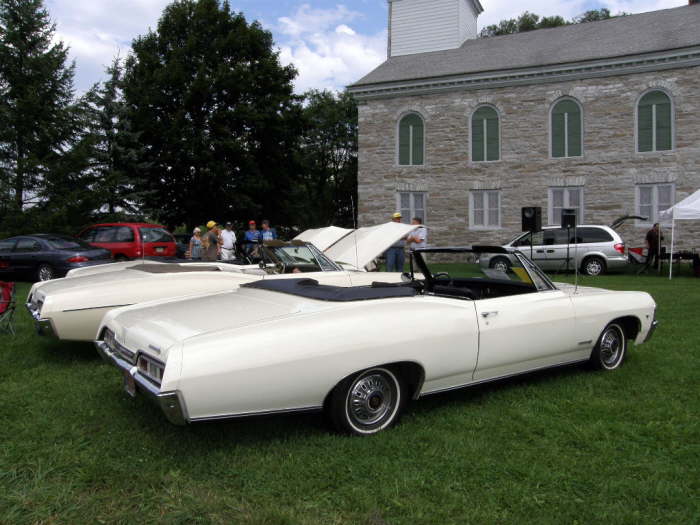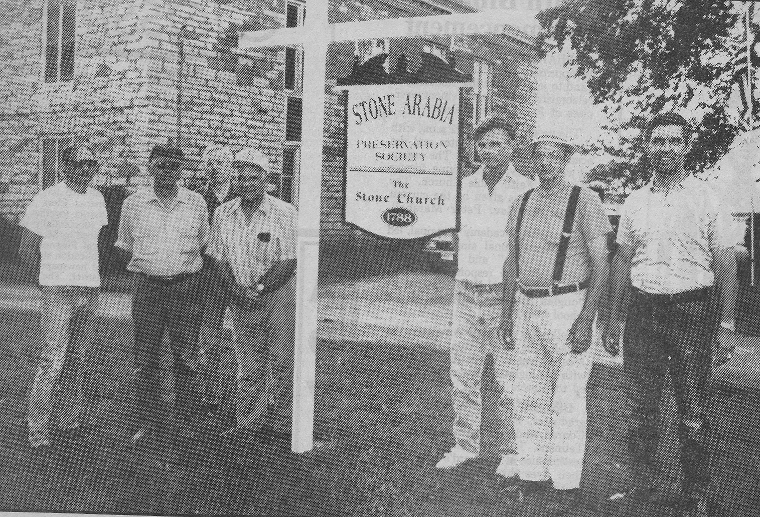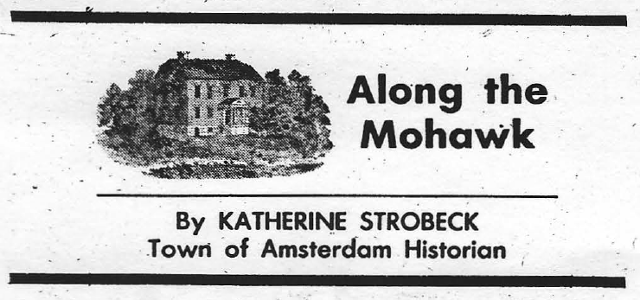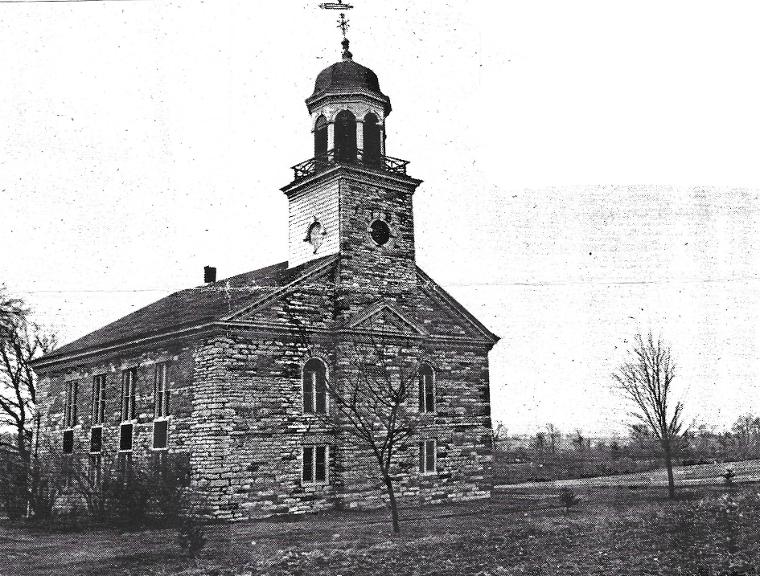Read All About It!
Stone Arabia Perservation Society 16th Annual Vehicle Show Craft Fair
Story and pictures from the 2009 show in Rod Hot Line by Tom Poremba

Hot Rod Line Photo by Tom Poremba
The Stone Arabia Preservation Society held its 16th Annual Vehicle Show and Craft Fair on Sunday August 23rd On the grounds of the Stone Church built in in Stone Arabia, NY in 1788. Over 100 Vehicles came to this Show despite the early rain that I know kept some cars away. But it didn't rain a drop after 8:30 am!
Two things of interest at this Show, There was two, 1935 International Trucks here. One was a very nice, all original Red Dump Truck, And the other Was Art Rumrill's Black, "Busted Knuckle Patrol" Hot Rod Truck that was at one time a Tanker truck on the same type frame as this Dump truck is on. Also Something I've never seen since maybe 1967 ? There was Three Beige, 1967 Chevy Impala SS Convertibles at the Show. All 3 the same body color!
Two of the Cars' Owners have met before, but it was a nice surprise to see a third "twin" come to the Show.
Sal Stokes, "The Singing DJ" was in charge of musical entertainment. There was a 50/50, Craft Vendors, and Refreshments available. Hope you enjoy my pictures! TOM POREMBA

|
Remembering an historic site by Douglas Ayres Jr Special to the C-S-E Nov 1993.pdf Size : 620.634 Kb Type : pdf |
Sign dedication
Published in the Courier Standard Enterprise in 1993

C-S-E photo by Richard Hency
The Stone Arabia Preservation Society has formally taken possession of the former Stone Arabia Reformed Church, its parsonage and the cemetery, which is the burial site of Col. John Brown, the hero of the Battle of Stone Arabia. The church was built in 1788, and will now be maintained by the society as an historical site. The former parsonage will serve as a museum and headquarters for the organization. Mrs. Doris Crandall, president of the Preservation Society , noted that the opening event will be a Homecoming Celebration, Sunday July 26, beginning at 2 p.m. A program in the church will include a hymn sing, guest speaker, and William Lamphere as Master of Ceremonies. There will also be a tribute to Col. Brown held in the cemetery. Above are a group of volunteer workers, currently working on repairs to the church and the parsonage, who took a moment out of their schedule to dedicate the new sign, erected adjacent to NYS Route 10. Left to right are: Robert Stamm, Willis Barshied Jr., Bill Hisert, Curtis Nellis, Earl Fredericks, Russell Tallman and Kenneth Edwards. Workers not in the photo are: Charles Vosburgh, Joe Ouderkirk, John Edwards and Jason Fredericks.
Strange name rich heritage
Story by Katherine Strobeck, Town of Amsterdam Historian, for the Amsterdam Recorder's Along the Mohawk series. Published in The Recorder, Amsterdam, N.Y. Sunday, June 10, 1990.

A stranger coming into the Mohawk Valley might well ask, "Where on earth did you people get a name like 'Stone Arabia'?" That is a question without any ready answer. No one seems to know. The early Palatines. and Dutch, none of whom were much on spelling, called it Steenraby, Stonaraby and Roubbly.
The Rev, John Taylor, a missionary to the Mohawk Valley, made a trip from Johnstown to Stone Arabia in 1802. This was approximately 75 years after the first Palatine settlers came to the area. His "Journal" contains the following entry. "Palatine, west of Johnstown and Mayfield: extent 15 by 12 miles. A place called Stone Arabia is in this town and contains one Lutheran church and one Dutch Reformed church. Mr. Lubauch is minister of the latter and Mr. Crotz of the former.
After leaving this town (Johnstown) I pass about 10 miles in a heavy-timbered country, with few inhabitants. The soil, however, appears in general to be excellent -- the country is a little more uneven than back in Amsterdam (Holland?). After traveling about 10 miles on a tolerable road I came to Stone Arabia, or Robbly as the Dutch pronounce.it. This is a parish of Palatines and is composed principally of High Dutch or Germans. From Johnstown to Stone Arabia the timber is beech and maple, with some hemlock. In Stone Arabia the timber is walnut and butternut. The fields of wheat are numerous and and the crop in general is excellent. The land for Indian corn, it is evident from appearance, is not properly plowed -- they plow very shallow. Peas appear to flourish as do oats. I perceive, as yet but one great defect in the morals of the people -- they are too much addicted to drink." ·
On October 19, 1723, the Stone Arabia patent was granted to John Christian Garlock, Elias Garlock, Andreas and Christian Fink, William Coppenol, Jacon, John Jost and Johanes Schell, Heinrich Frey and 18 others. With this, the long wanderings of the Palatines finally came to an end. Forced to leave the. Palatine section of Germany because of religious discrimination, heavy taxation, and forced years in the army, these followers of Martin Luther had at last found their promised land." As farmers, they appreciated the soil of the Mohawk Valley and immediately began to carve farms out of the wilderness.

These were 'not the first settlers in this area. Elias Garlock came about 1717 and Peter Wagner arrived a·bout 1721. With him were his family, including 2-year-old Johann Peter, later a member of the Committee of Safety of Tryon County and a lieutenant colonel of the Tryon County Militia at the battle of Oriskany. Willtam Fox came with Peter Wagner, and several of his descendants took part in the Oriskany battle. Koch (Cook) came from Switzerland and settled at Stone Arabia. His son John was wounded at Oriskany but was brought home, where he recovered. His buildings were all destroyed at the battle of Stone Arabia ·
No honors are too great for the memory of these families of Stone Arabia. Against almost insurmountable odds they made their way to the new world, obtained land and built rude log cabins to shelter them until they could raise food and eventually build barns and houses. Most were too poor to have draft animals, so early farming was an arduous task. But they persevered, and by the time of the Revolution their farms were prosperous, their homes and barns were large and well built.
The Stone Arabia patent was divided into lots and was the first of its kind, in contrast to the enormous grants of thousands of acres given to the king’s favorites. Here 12,700 acres were granted to 27 settlers.
The Palatines were a deeply religious group and one of their first tasks was the erection of a church. A Reformed society had been formed as early as 1711, making it the oldest Reformed churche west of Schenectady and north of the Mohawk.
In 1729 a log church was build on the site of the current Lutheran church on land of William Coppernoll of Schenectady, the only Holland Dutchman in the group. The contract for the deed is in the church records:
“Memorandum of agreement between William Coppernoll and Andrewas Feink, Heinrich Frey, Hans Dietrich Casselman, John Jerry Miller, and all the rest of the company of this land. Noted: the said William Coppernoll hath sold to the above said Andreas Feink, Heinrich Frey and all the rest of the aforesaid company a certain lot of land numbere din our patent number 20, for a church and other uses for the same and no others, and the said William Coppernoll is therefore paid and satisfied. And the said William Coppernoll binds himself, his heirs, and assignes in the sum of 100 poutnds good an lawful money of New York, to give a good, lawful transport for the above said lot of land before the 9th day of April 1831, as witness my hand and seal this 2nd day of June, 1729.
Executed May 29th 1732 William Coppernoll”
A log church was built and both the Lutheran and the Reformed cogregations worshipped in this building. In 1733 a new frame building was begun, but with hardly more than the foundation in place, a dispute arose over the name of the new church. Apparently no one cared to compromise, for the Lutherans withdrew and continued to worship in the log church. The Reformed congregation continued with the new one. The original tract of 50 acres as equally divided between the two groups.
The Reformed congregation finished their frame buildings while the Lutherans continued in the log church. In the fall of 1780, however, all would change. The Revolution had taken a heavy toll in the Mohawk Valley. Many had died at Oriskany and at Saratoga. But the Palatines had stayed with their farms where they grew grain for Washington’s army.
In October 1780, the British were determined to destroy the farms of the valley and cut off Washington’s supply of food.
Sir John Johnson had led a raid on the valley in the spring and had burned and destroyed farms and crops throughout the Mohawk Valley. In October 1780he came by way of the Susquehanna and moved down the Schoharie Valley to Fort Hunter. Every farm was destroyed, stock driven off and the inhabitants murdered.
By the 18th of October he had proceded u the Mohawk from Fort Hunter and was ready to cross the river and attack Stone Arabia. When the British entered the Schoharie Valley, Gov. Clinton had ordered Gen. Van Rensselaer to march up the Mohwk in pursuit of Johnson. Van Rensselaer arrived in the vicinity of Fort Plain on the 18th and sent word to Brown that Johnson would cross the river and, in the morning, march up the hill to Stone Arabia. Brown was to lead his troops from the fort and attack Johnson head-on. Van Rensselaer would attack from the rear and Johnson would be caught in a trap.
Brown was born on October 19, 1744, in Massachusetts. He graduated from Yale College in 1771 and studied law with Oliver Arnold, a cousin of the traitor, Benedict Arnold. He practiced law at Caughnawaga (Fonda) and was appointed King’s attorney. He went to Pittsfield, Mass, where he was very active in the patriot cause and was appointed to the State Committee of Correspondence. He was elected to Congress in 1775, but before that met he had joined the expedition of Ethan Allen and Arnold against Ticonderoga. In 1777 he was commissioned a lieutenant colonel and led a successful attach on Ticonderoga and other outposts which resulted in the freeing of many American prisoners. After this, he retired from the service because of his hatred of Benedict Arnold. Three years before Arnold became a traitor, Brown published a handbill in which he charged him with “selling many a life for gain” and the prophetic words, “Money is this man’s god, and to get enough of it he would sacrifice his country.”
On the morning of Oct. 19, Brown, as ordered by Van Rensselaer, led his troops to meet Johnson. Van Rensselaer, however, did not arrive until hours later. Brown, along with most of his men, was murdered and scalped.
